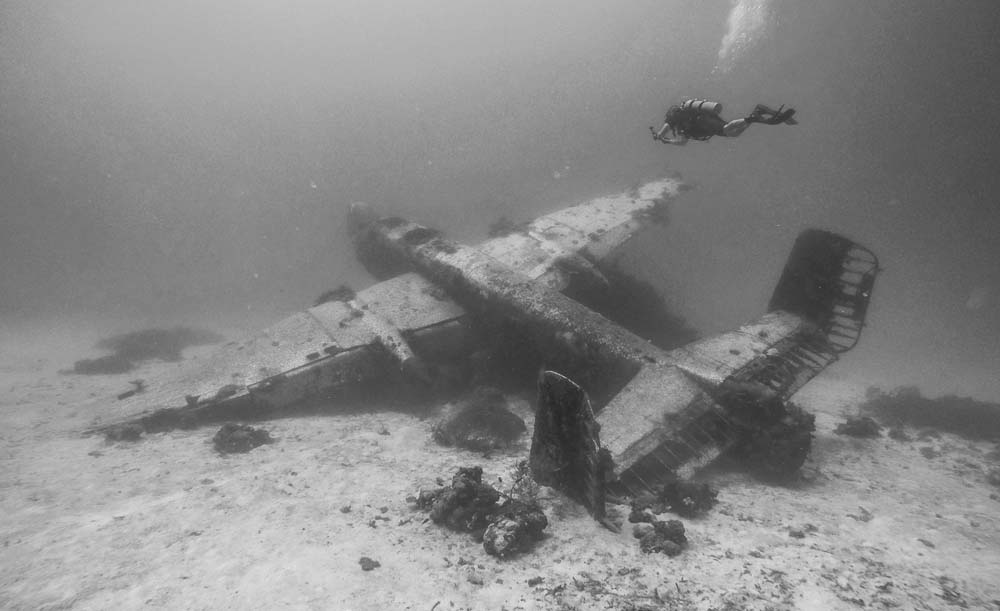
The WW2 Pacific Treasures of Kwajalein Lagoon by Dan Farnham Part 14: Exploring the graveyard of the 11 PBJ-1H Mitchell aircraft wrecks of US Marine Bombing Squadron 613 (VMB-613)
Interviews, WW2, WW2 Pacific Treasures, WW2 WrecksBy Pierre Kosmidis
Photos, text and research submitted by Dan Farnham, used by permission
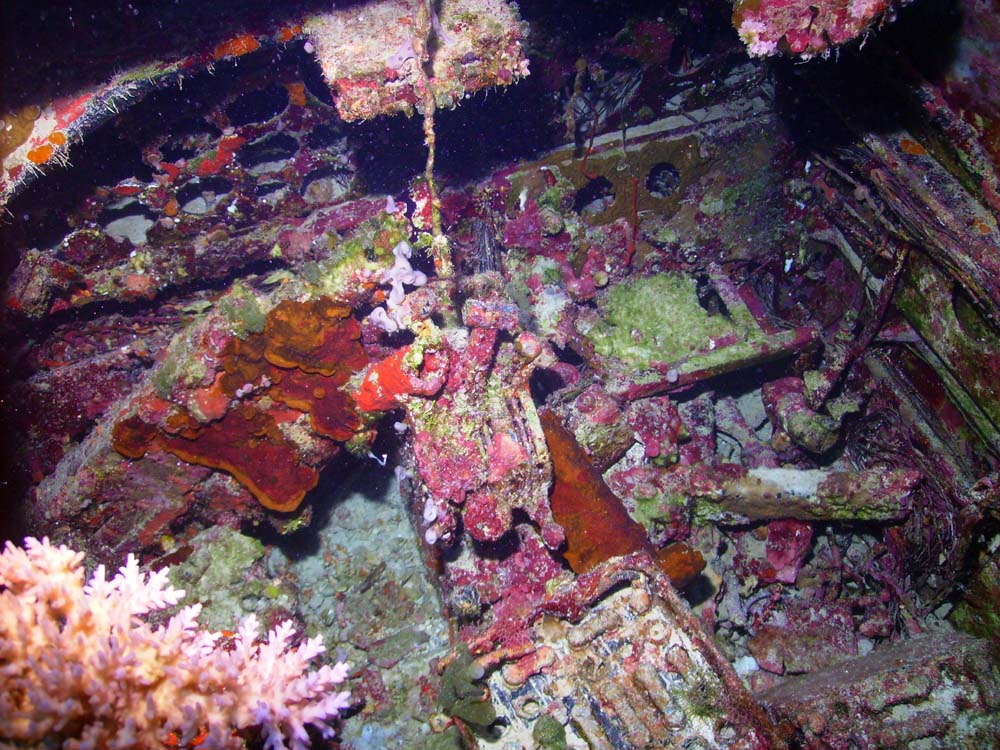
Designed in 1938, the B-25 ‘Mitchell’ started out as a private, in-house design by the North American Aviation company, and was designated the NA-40B, for North American Model 40B.
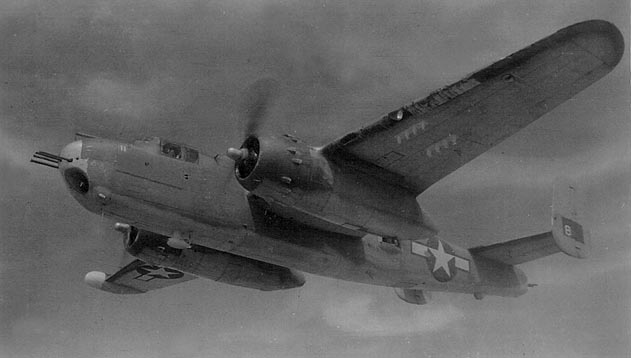
The NA-40B was originally intended to be an attack bomber for export to Britain and France, which were in desperate need of medium attack aircraft in the early stages of World War II.

However, these countries changed their minds, opting instead for other aircraft.
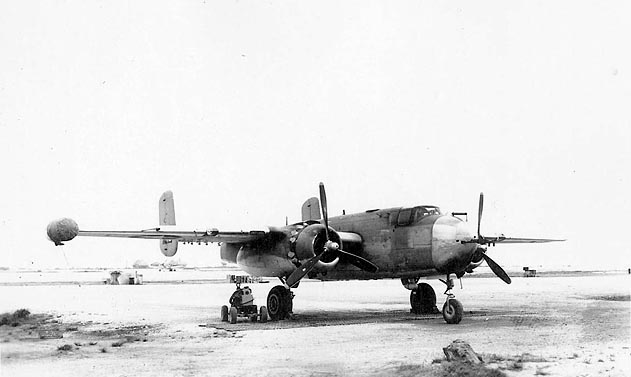
Despite this loss of sales, the NA-40B re-entered the spotlight in 1939 when the U.S. Army Air Force evaluated it for use as a medium bomber.
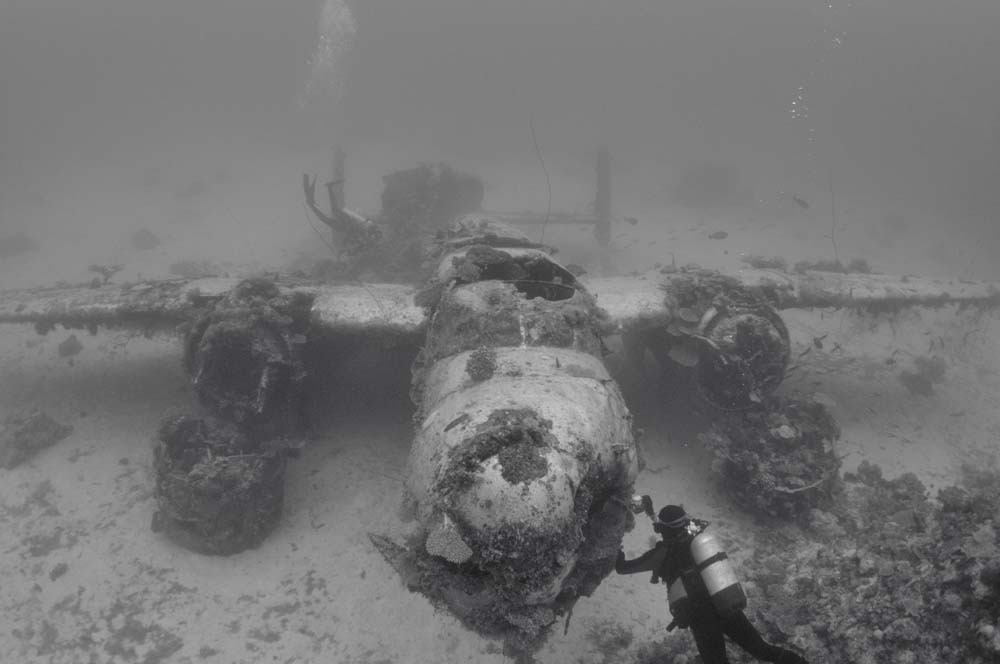
The type was ordered into production in September 1939, and was given the designation ‘B-25’ and named the Mitchell in honor of General Billy Mitchell.
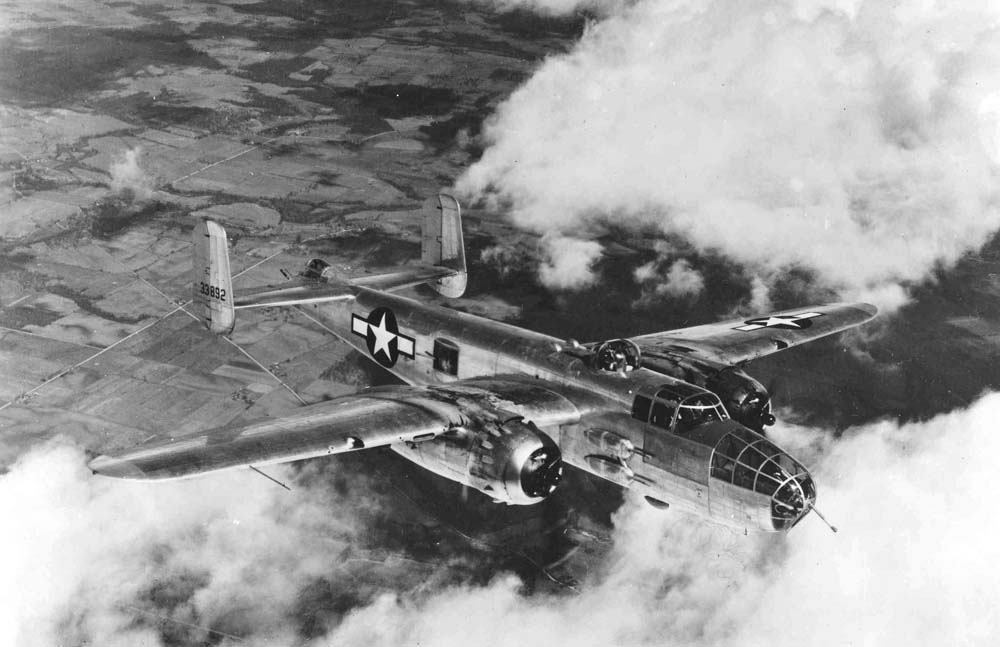
The Mitchell had a shoulder-mounted wing, two engines, tricycle landing gear, and twin tail fins.
The plane carried a crew of five to six, and by the final version, which was the B-25J, the Mitchell could carry up to fourteen .50 caliber machine guns, 3,200 pounds of bombs in its internal bomb bay and a variety of rockets under the wings.
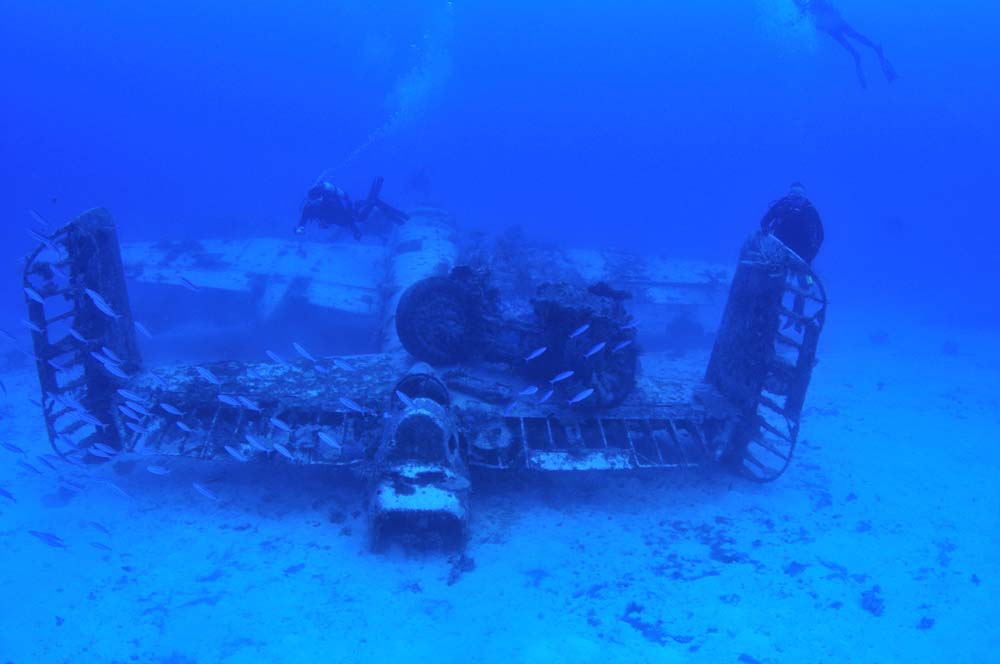
It served in a variety of roles, which included bombing, dedicated ground strike, reconnaissance, and even torpedo carriers.
The B-25 Mitchell went on to become one of the classic American aircraft designs to emerge during World War II. With a total of 9,816 built before production ended, it had the highest production total of any medium bomber of any country during the war.

The most famous early action of the Mitchell was the ‘Doolittle Raid’. On April 18, 1942 sixteen USAAF Mitchells took off from the USS Hornet (CV-8) to strike targets in Japan.

The cities of Nagoya, Tokyo, Kobe, and Yokohama were bombed, and although the raid caused only very minor damage, it showed the Japanese that their homeland was not invulnerable to attack. It was also a great morale-booster for American citizens at a time when the war seemed to consist of one defeat after another.

Besides the United States, many Allied air forces also operated the Mitchell during World War II to great effect in every theater the plane served in. Allied air forces which operated Mitchells included Britain, Australia, Canada, China, Netherlands, Russia, Brazil, France, and others, with some countries continuing to operate them into the post-war years.
A total of 706 Mitchells were transferred to the U.S. Navy for use by the Marine Corps. The U.S. Navy designated their Mitchells as ‘PBJ-1’, which stands for ‘Patrol Bomber’, and the ‘J’ was the letter assigned by the U.S. Navy to all aircraft built by the North American Aviation company.
Mitchells which were transferred to the U.S. Navy were given designations that partly corresponded to their Army counterparts- PBJ-1C for the B-25C, PBJ-1D for the B-25D, and so forth. 248 of the Mitchells transferred to the U.S. Navy were B-25H’s, and in naval service they were designated as PBJ-1H.

Several USAAF squadrons flew the B-25H in combat, but only one Marine squadron flew the navalised PBJ-1H in combat. That squadron was Marine Bombing Squadron 613 (VMB-613), which operated from Kwajalein Island beginning in December 1944.
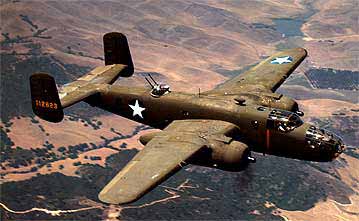
The PBJ-1H, like all other versions of the Mitchell, was powered by a pair of 1,350 horsepower engines. It carried a 75mm cannon in the nose of the plane, and up to fourteen .50 caliber machine guns. In addition to the armament, these aircraft were heavily modified for Marine Corps use. One of the modifications was the addition of a AN/APS-3 search radar in a radome on the right wingtip. The maximum speed of the plane with a 3,000 pound bomb load was 275mph, with a range of 1,173 nautical miles.
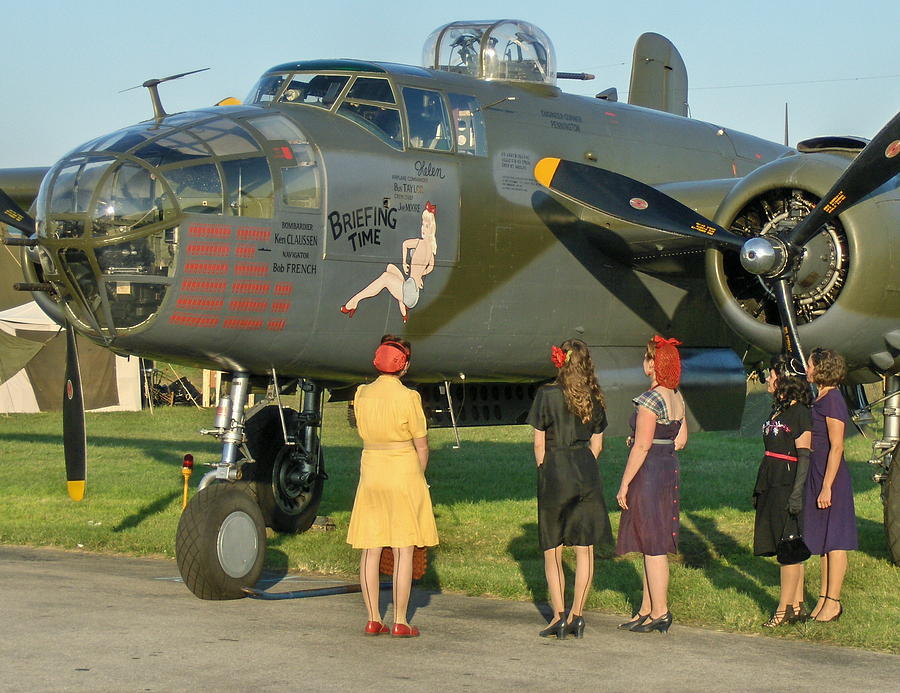
After arrival in the operations area, VMB-613 maintenance personnel made a number of changes, the most noticeable ones being the removal of the top turret, and removal of the “package” guns on both sides below the cockpit. This both saved weight and increased the range of their aircraft.
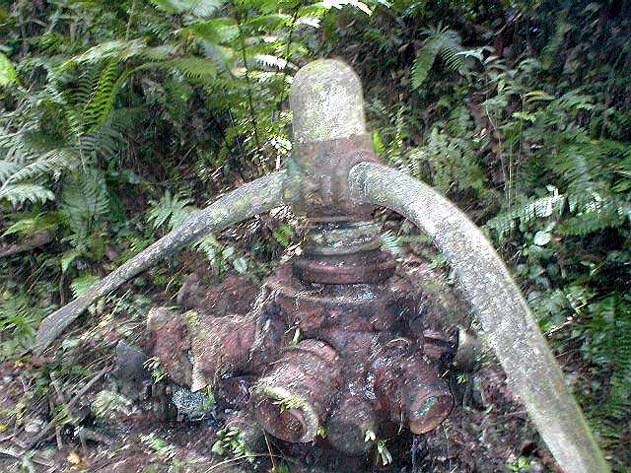
The task of VMB-613, like that of many other squadrons operating at Kwajalein Atoll following Operation Flintlock, was flying anti-shipping patrols, strikes against nearby atolls and islands that had been bypassed by American forces and still held Japanese garrisons, and providing escort for other strike aircraft. They performed these roles from December 1944 until October 1945.

The squadron suffered seven combat casualties during the war.
All of them happened on February 6, 1945 during a strike over Japanese-held Ponape Island.
One PBJ-1H was shot down with the loss of its six-man crew, and a second plane was also hit by anti-aircraft fire which killed the navigator.
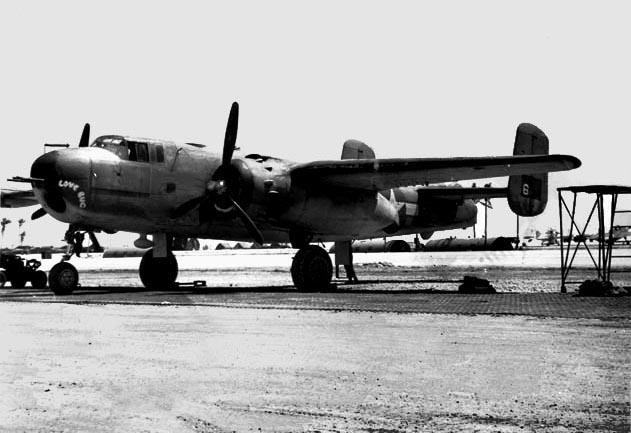
In October 1945, two months after the Japanese announced they were surrendering, VMB-613 received orders to return home.
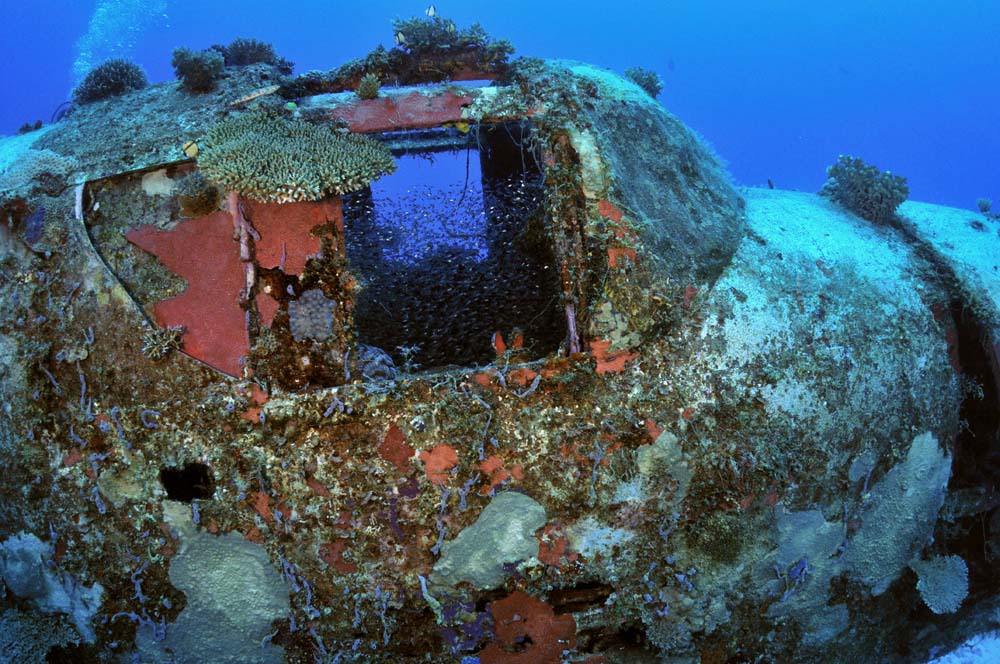
Four of the squadron’s planes were stripped and pushed into a dump on Kwajalein Island.
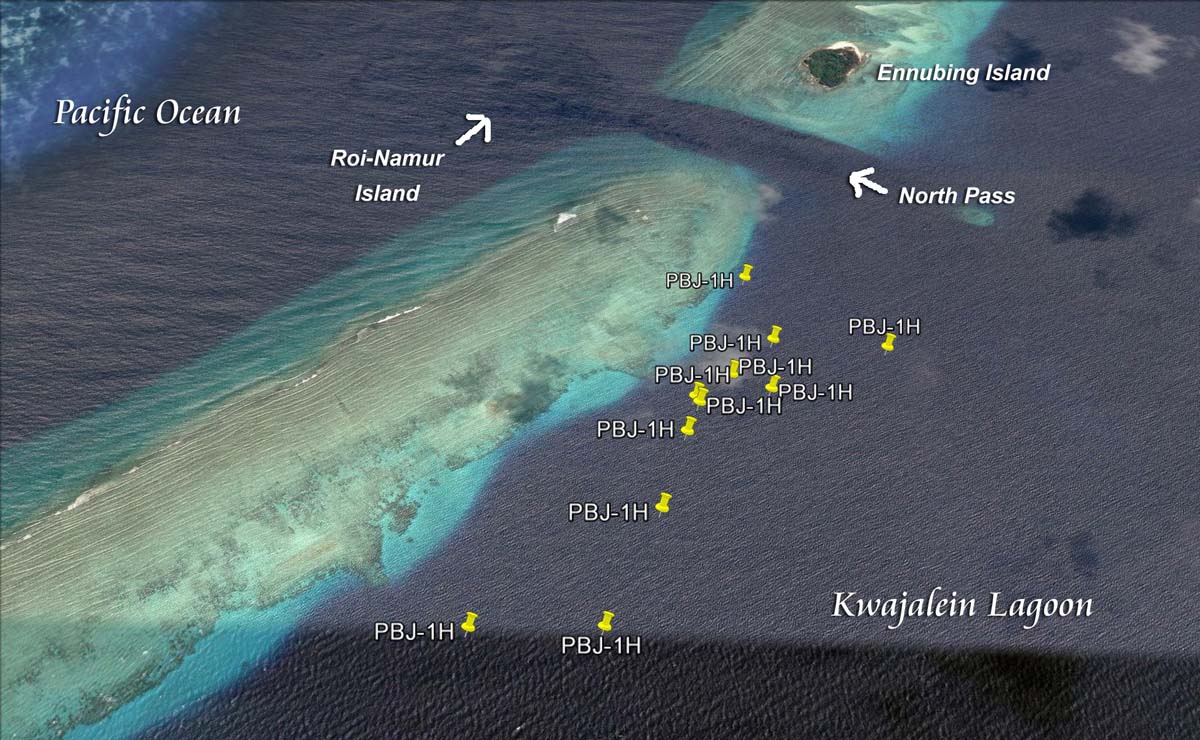
One of the four caught fire and was destroyed, and the remaining three were cut up and bulldozed into the ocean off the southwest end of the island.
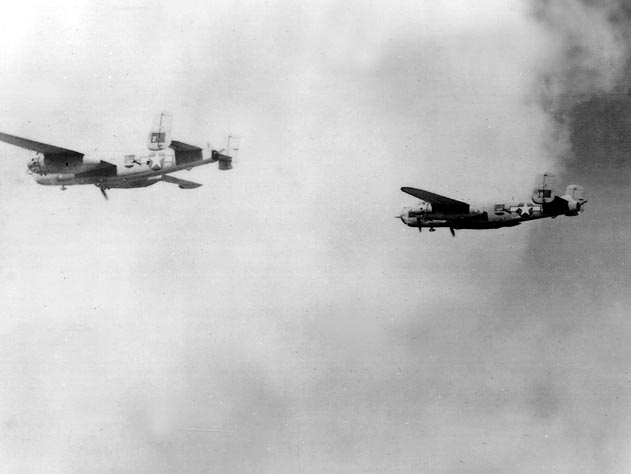
The remaining eleven Mitchells of VMB-613 were flown north to Roi Island, and turned over to Combat Aircraft Service Unit (Forward) #20, whose personnel stripped anything usable off the planes.
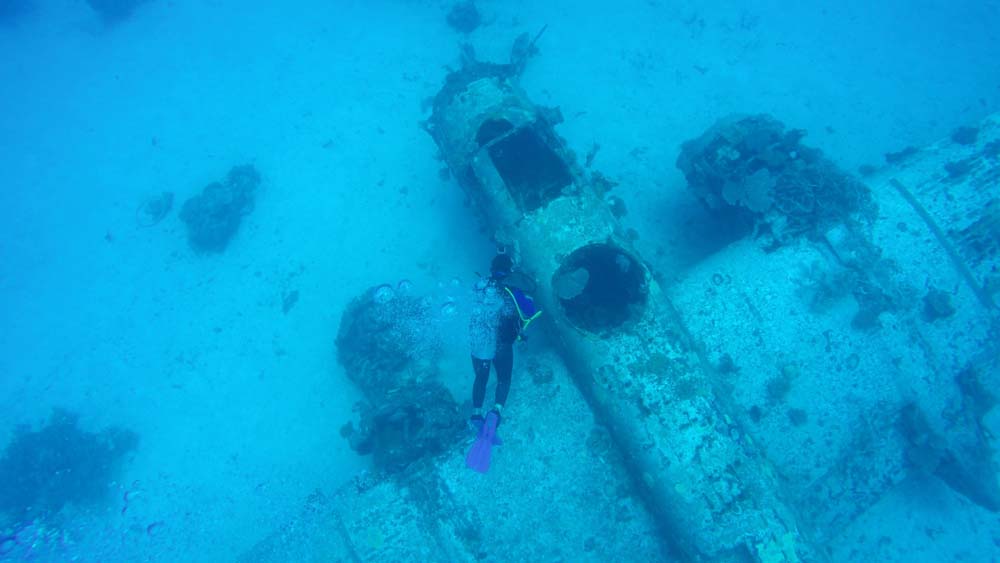
After the planes were stripped, they were loaded on barges, taken out into the lagoon, and shoved into the water near Mellu Island.
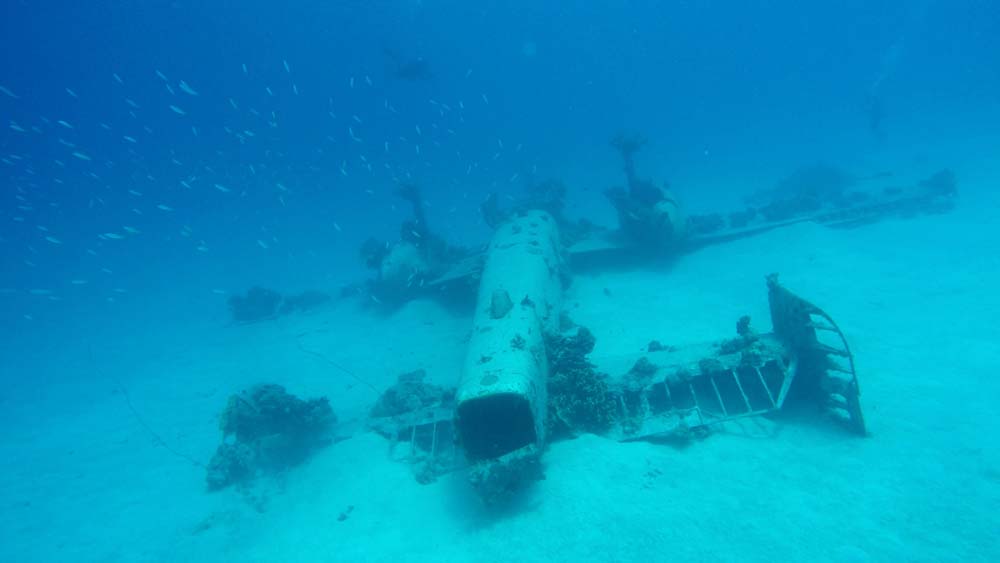
Today, it is possible to dive all eleven of the PBJ’s. They are scattered in an area that is less than one nautical mile long.
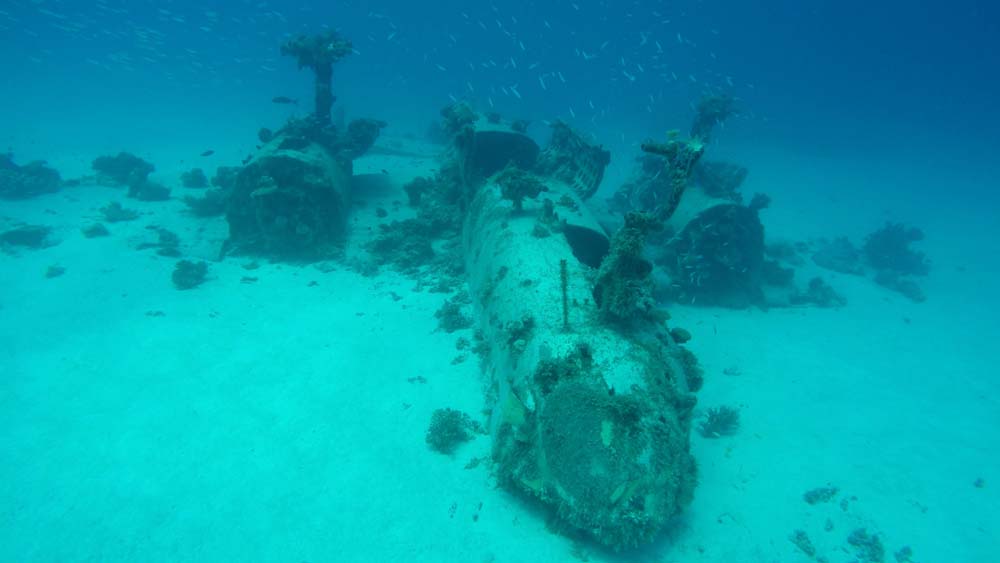
The planes lie mostly upright in a variety of poses, in depths ranging from 70 to 120 feet deep.
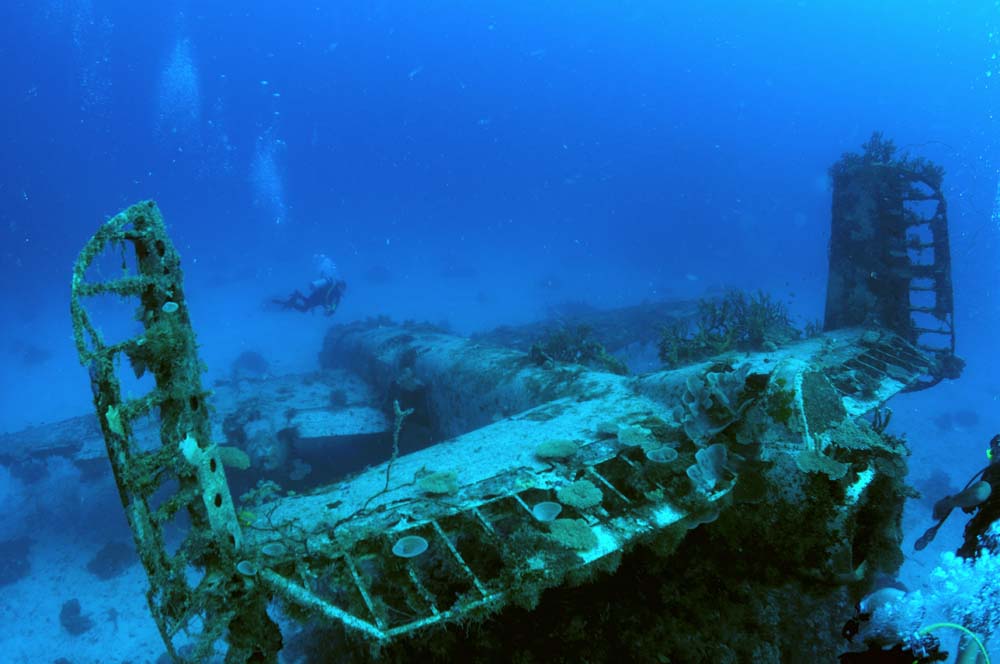
One of the PBJ’s lies upside down, and another has the remnants of a truck chassis lying across its tail section.
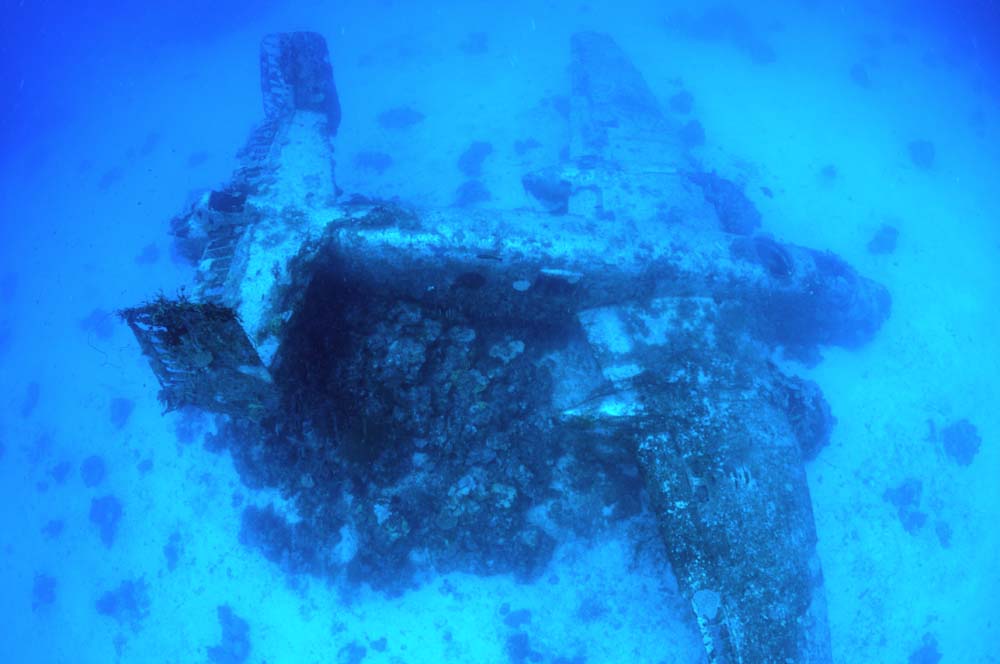
My personal favorite is the one that is leaning up against a coral head, nose and right wing up.
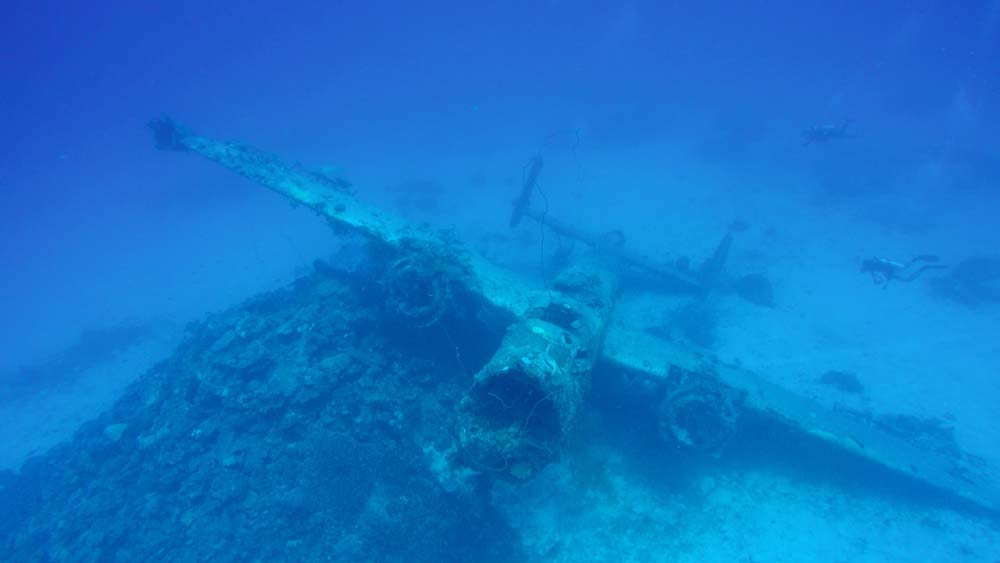
Some of the planes had their engines removed before they were dumped into the lagoon.
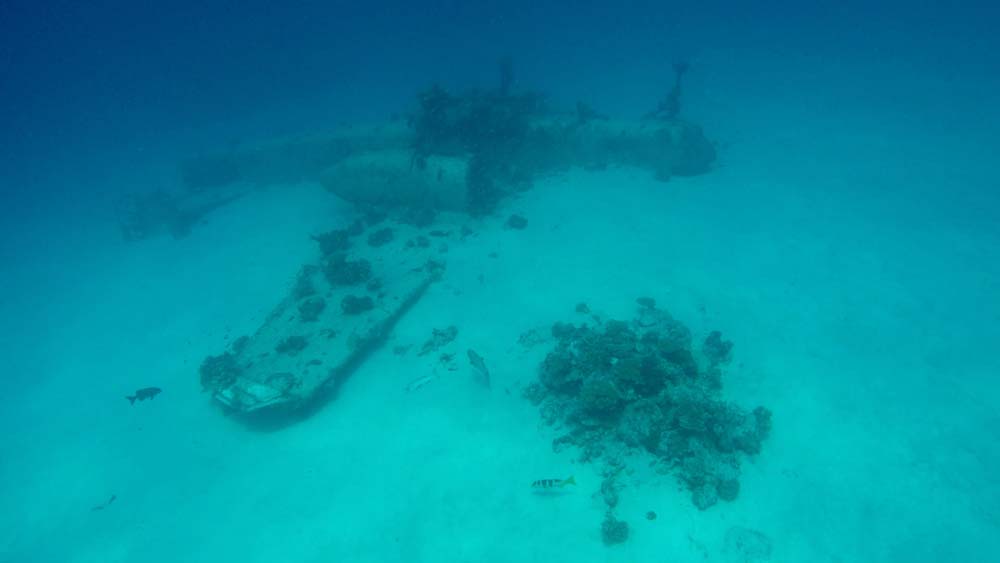
On those that didn’t, the engines have fallen off into the sand. All of them have the remnants of radomes on the right wingtips.
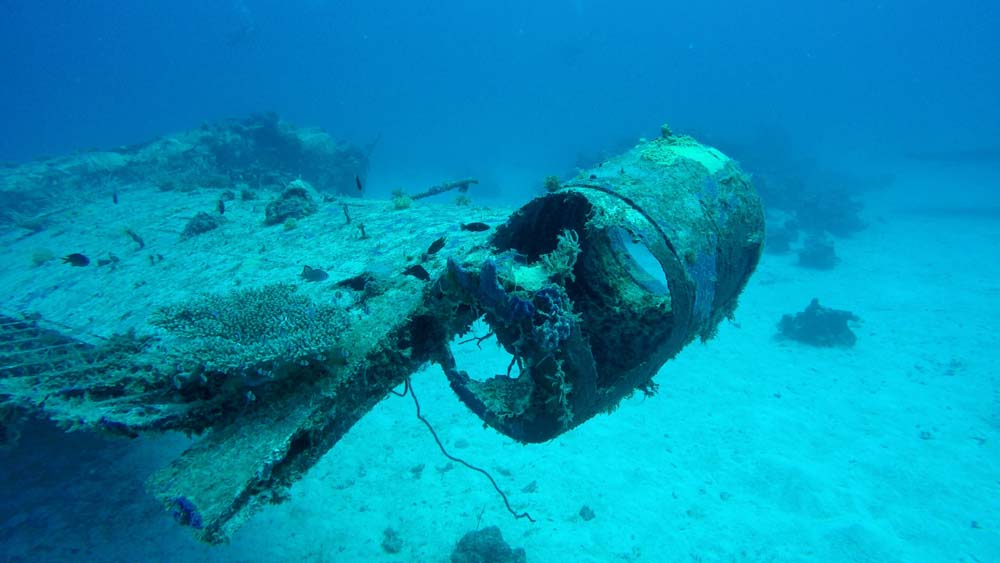
This, along with the fact that no USAAF Mitchells were dumped into the lagoon, positively identifies these planes as former VMB-613 aircraft.
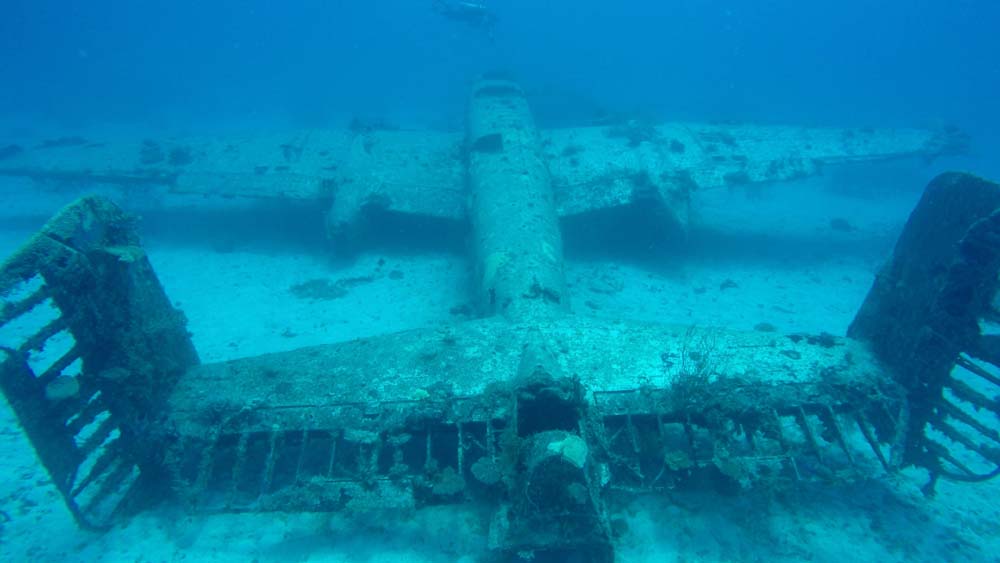
All of them make for excellent dives, and a look into the past for those lucky enough to dive these planes.
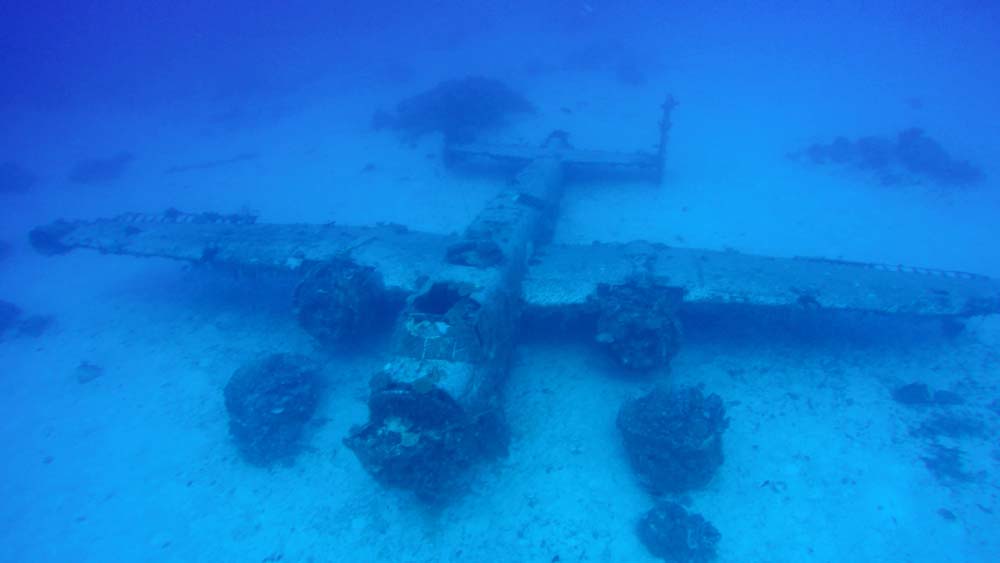
The Mitchell certainly played a significant part in World War II, serving in every theater of the war and with many Allied nations.
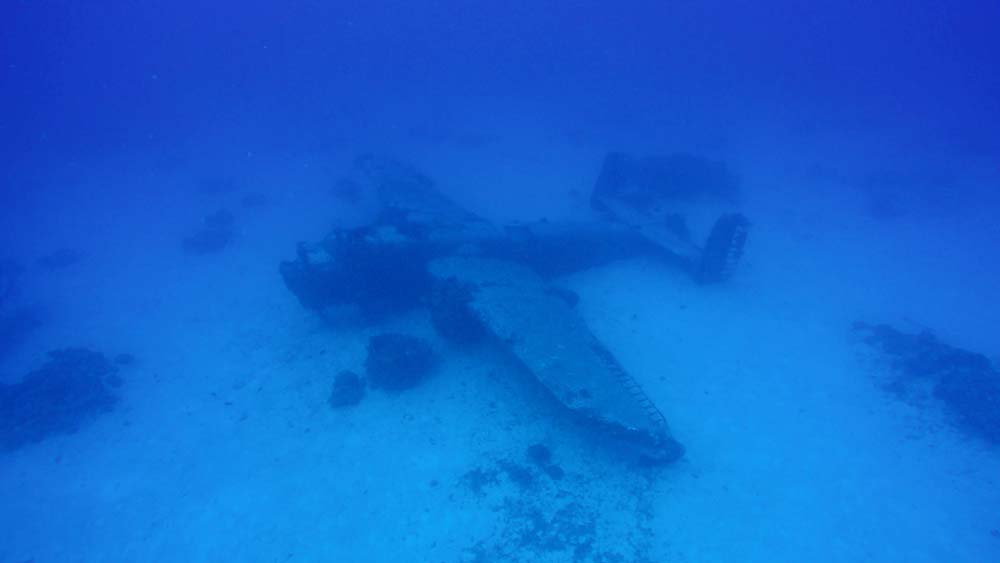
More than one hundred Mitchells survive in museums around the world, mostly on static display.

Of that number, about forty-five are still flying, making rounds of the airshow circuits and helping keep the history of the plane alive, as well as the memory of the Allied pilots and crews who flew and maintained them during the war.
 October 7, 2018: Dan Farnham films one of the PBJ-1H wrecks in the Kwajalein lagoon. (Photo courtesy of Jessica Holland, used by permission)
October 7, 2018: Dan Farnham films one of the PBJ-1H wrecks in the Kwajalein lagoon. (Photo courtesy of Jessica Holland, used by permission)
Recommended additional reading:
VMB-613 Association website

